Antiferromagnetic Oxide Thin Films for Spintronic Applications
Abstract
:1. Introduction
2. Deposition Methods and Characterizations
3. Results and Discussions
3.1. Crystal Structures of Epitaxial Oxide Films
3.2. Magnetic Properties
4. Conclusions
Author Contributions
Funding
Institutional Review Board Statement
Informed Consent Statement
Data Availability Statement
Conflicts of Interest
References
- Wang, H.; Du, C.; Hammel, P.C.; Yang, F. Antiferromagnonic spin transport from Y3Fe5O12 into NiO. Phys. Rev. Lett. 2014, 113, 097202. [Google Scholar] [CrossRef] [Green Version]
- Hahn, C.; de Loubens, G.; Naletov, V.V.; Ben Youssef, J.; Klein, O.; Viret, M. Conduction of spin currents through insulating antiferromagnetic oxides. EPL Europhys. Lett. 2014, 108, 57005. [Google Scholar] [CrossRef] [Green Version]
- Seki, S.; Ideue, T.; Kubota, M.; Kozuka, Y.; Takagi, R.; Nakamura, M.; Kaneko, Y.; Kawasaki, M.; Tokura, Y. Thermal generation of spin current in an antiferromagnet. Phys. Rev. Lett. 2015, 115, 266601. [Google Scholar] [CrossRef]
- Wu, S.M.; Zhang, W.; Kc, A.; Borisov, P.; Pearson, J.E.; Jiang, J.S.; Lederman, D.; Hoffmann, A.; Bhattacharya, A. Antiferromagnetic spin seebeck effect. Phys. Rev. Lett. 2016, 116, 097204. [Google Scholar] [CrossRef]
- Luo, Y.; Liu, C.; Saglam, H.; Li, Y.; Zhang, W.; Zhang, S.S.; Pearson, J.E.; Fisher, B.; Zhou, T.; Bhattacharya, A.; et al. Distinguishing antiferromagnetic spin sublattices via the spin Seebeck effect. Phys. Rev. B 2021, 103, L020401. [Google Scholar] [CrossRef]
- Li, J.; Wilson, C.B.; Cheng, R.; Lohmann, M.; Kavand, M.; Yuan, W.; Aldosary, M.; Agladze, N.; Wei, P.; Sherwin, M.S.; et al. Spin current from sub-terahertz-generated antiferromagnetic magnons. Nature 2020, 578, 70–74. [Google Scholar] [CrossRef]
- Vaidya, P.; Morley, S.A.; van Tol, J.; Liu, Y.; Cheng, R.; Brataas, A.; Lederman, D.; del Barco, E. Subterahertz spin pumping from an insulating antiferromagnet. Science 2020, 368, 160. [Google Scholar] [CrossRef] [Green Version]
- Yuan, W.; Zhu, Q.; Su, T.; Yao, Y.; Xing, W.; Chen, Y.; Ma, Y.; Lin, X.; Shi, J.; Shindou, R.; et al. Experimental signatures of spin superfluid ground state in canted antiferromagnet Cr2O3 via nonlocal spin transport. Sci. Adv. 2018, 4, eaat1098. [Google Scholar] [CrossRef] [Green Version]
- Lebrun, R.; Ross, A.; Bender, S.A.; Qaiumzadeh, A.; Baldrati, L.; Cramer, J.; Brataas, A.; Duine, R.A.; Kläui, M. Tunable long-distance spin transport in a crystalline antiferromagnetic iron oxide. Nature 2018, 561, 222–225. [Google Scholar] [CrossRef]
- Lebrun, R.; Ross, A.; Gomonay, O.; Baltz, V.; Ebels, U.; Barra, A.L.; Qaiumzadeh, A.; Brataas, A.; Sinova, J.; Klaui, M. Long-distance spin-transport across the Morin phase transition up to room temperature in ultra-low damping single crystals of the antiferromagnet α-Fe2O3. Nat. Commun. 2020, 11, 6332. [Google Scholar] [CrossRef]
- Zhang, P.; Finley, J.; Safi, T.; Liu, L. Quantitative study on current-induced effect in an antiferromagnet insulator/Pt bilayer film. Phys. Rev. Lett. 2019, 123, 247206. [Google Scholar] [CrossRef] [Green Version]
- Kosub, T.; Kopte, M.; Hühne, R.; Appel, P.; Shields, B.; Maletinsky, P.; Hübner, R.; Liedke, M.O.; Fassbender, J.; Schmidt, O.G.; et al. Purely antiferromagnetic magnetoelectric random access memory. Nat. Commun. 2017, 8, 13985. [Google Scholar] [CrossRef]
- Ramazanov, S.; Sobola, D.; Orudzhev, F.; Knápek, A.; Polčák, J.; Potoček, M.; Kaspar, P.; Dallaev, R. Surface modification and enhancement of ferromagnetism in BiFeO3 nanofilms deposited on HOPG. Nanomaterials 2020, 10, 1990. [Google Scholar] [CrossRef] [PubMed]
- Speriosu, V.S.; Herman, D.A.; Sanders, I.L.; Yogi, T. Magnetic thin films in recording technology. IBM J. Res. Dev. 1990, 34, 884–902. [Google Scholar] [CrossRef]
- Leighton, C.; Hoffmann, A.; Fitzsimmons, M.R.; Nogués, J.; Schuller, I.K. Deposition of epitaxial α-Fe2O3 layers for exchange bias studies by reactive dc magnetron sputtering. Philos. Mag. B 2001, 81, 1927–1934. [Google Scholar] [CrossRef]
- Valeri, S.; Altieri, S.; Luches, P. Growth of antiferromagnetic oxide thin films. Magn. Prop. Antiferromagn. Oxide Mater. 2010, 25–68. [Google Scholar] [CrossRef]
- Shimomura, N.; Pati, S.P.; Sato, Y.; Nozaki, T.; Shibata, T.; Mibu, K.; Sahashi, M. Morin transition temperature in (0001)-oriented α-Fe2O3 thin film and effect of Ir doping. J. Appl. Phys. 2015, 117, 17C736. [Google Scholar] [CrossRef]
- Rothhaar, U.; Oechsner, H. Rf magnetron sputter deposition of Cr2O3 layers on ceramic Al2O3 substrates. Surf. Coat. Technol. 1993, 59, 183–186. [Google Scholar] [CrossRef]
- Vayunandana Reddy, Y.K.; Wolfman, J.; Autret-Lambert, C.; Gervais, M.; Gervais, F. Strain relaxation of epitaxial (Ba0.6Sr0.4)(Zr0.3Ti0.7)O3 thin films grown on SrTiO3 substrates by pulsed laser deposition. J. Appl. Phys. 2010, 107, 106101. [Google Scholar]
- Yu, T.; Sharma, S.; Blanter, Y.M.; Bauer, G.E. Surface dynamics of rough magnetic films. Phys. Rev. B 2019, 99, 174402. [Google Scholar] [CrossRef] [Green Version]
- Nozaki, T.; Al-Mahdawi, M.; Shiokawa, Y.; Pati, S.P.; Imamura, H.; Sahashi, M. Magnetic anisotropy of doped Cr2O3 antiferromagnetic films evaluated by utilizing parasitic magnetization. J. Appl. Phys. 2020, 128, 023901. [Google Scholar] [CrossRef]
- Morin, F.J. Electrical properties of αFe2O3 and αFe2O3 containing titanium. Phys. Rev. 1951, 83, 1005–1010. [Google Scholar] [CrossRef]
- Artman, J.O.; Murphy, J.C.; Foner, S. Magnetic anisotropy in antiferromagnetic corundum-type sesquioxides. Phys. Rev. 1965, 138, A912–A917. [Google Scholar] [CrossRef]
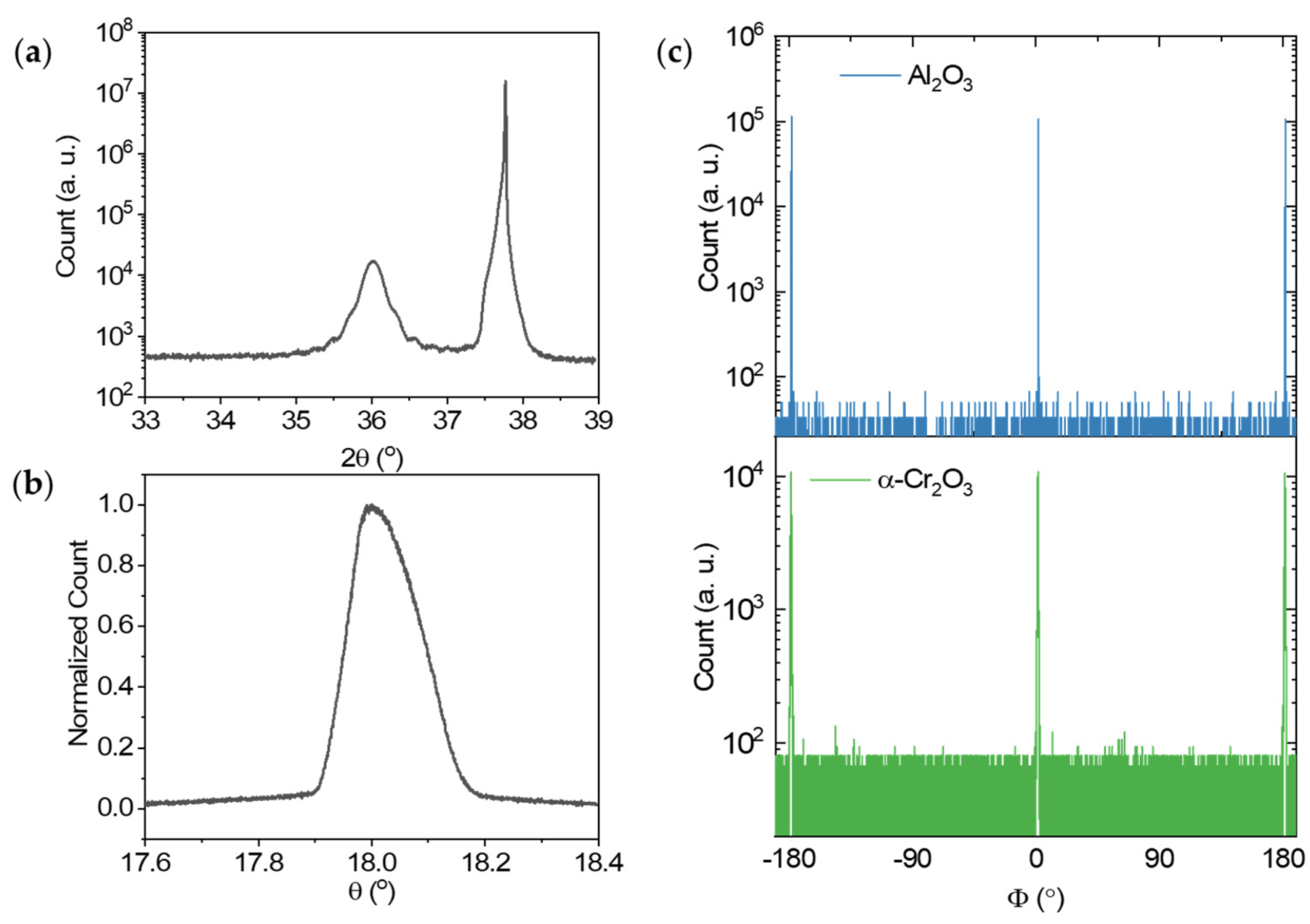
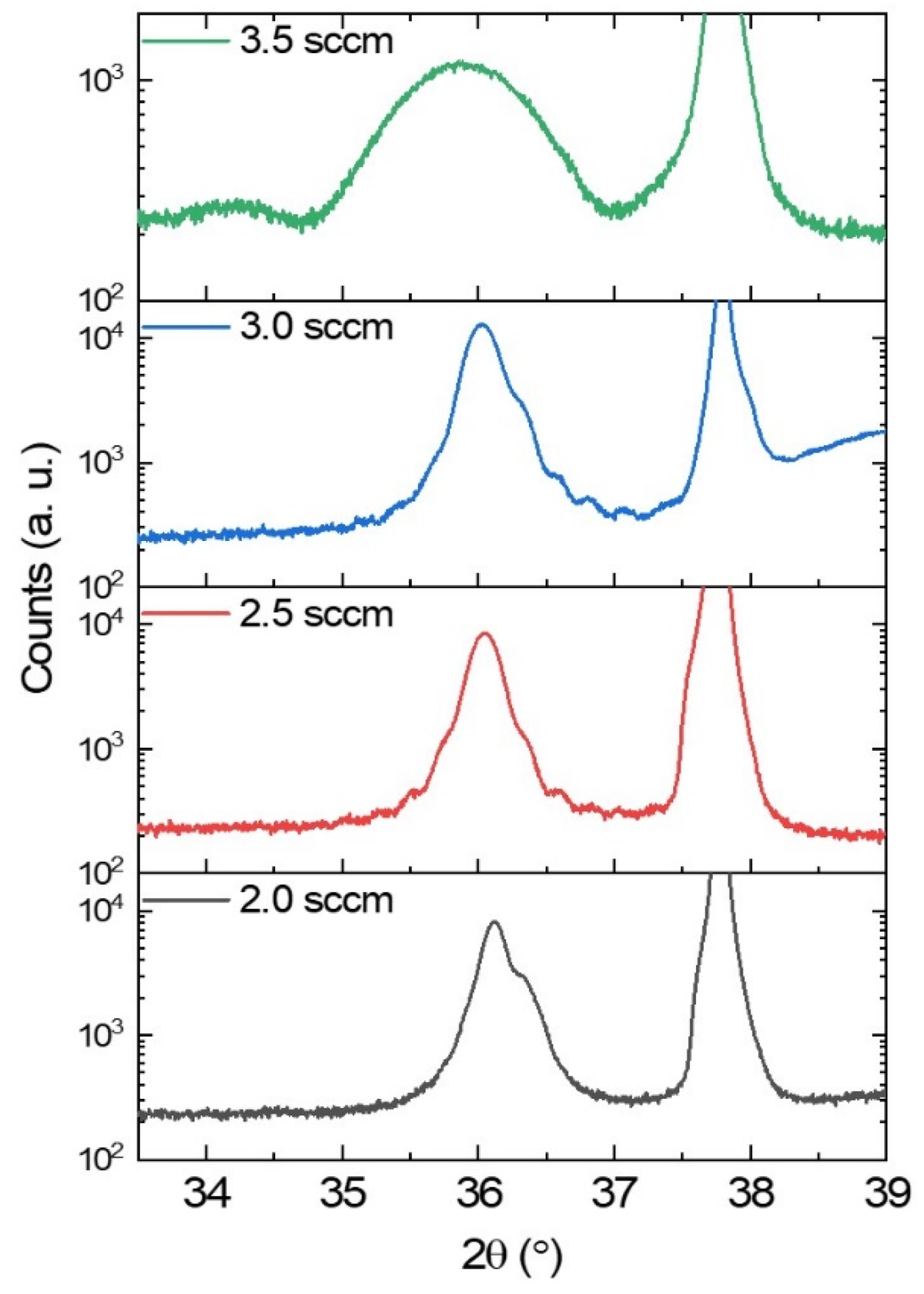
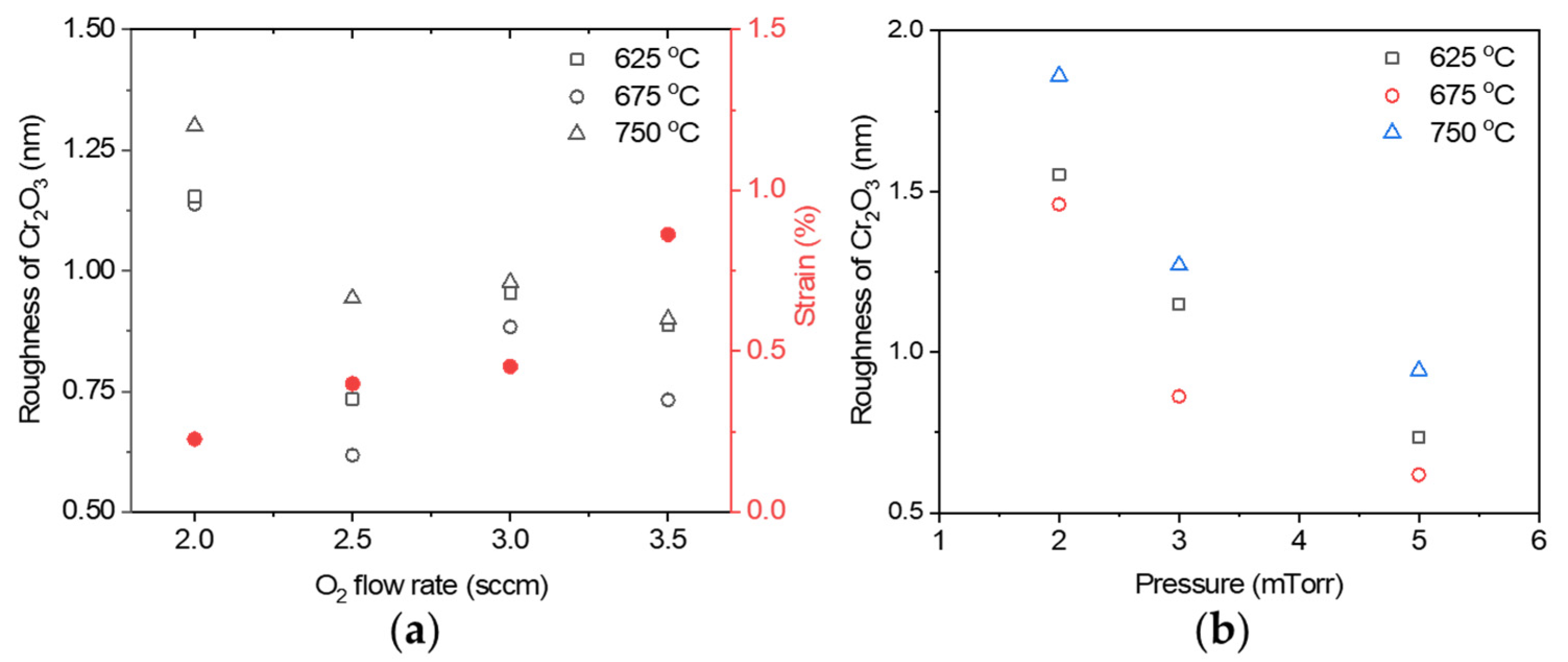
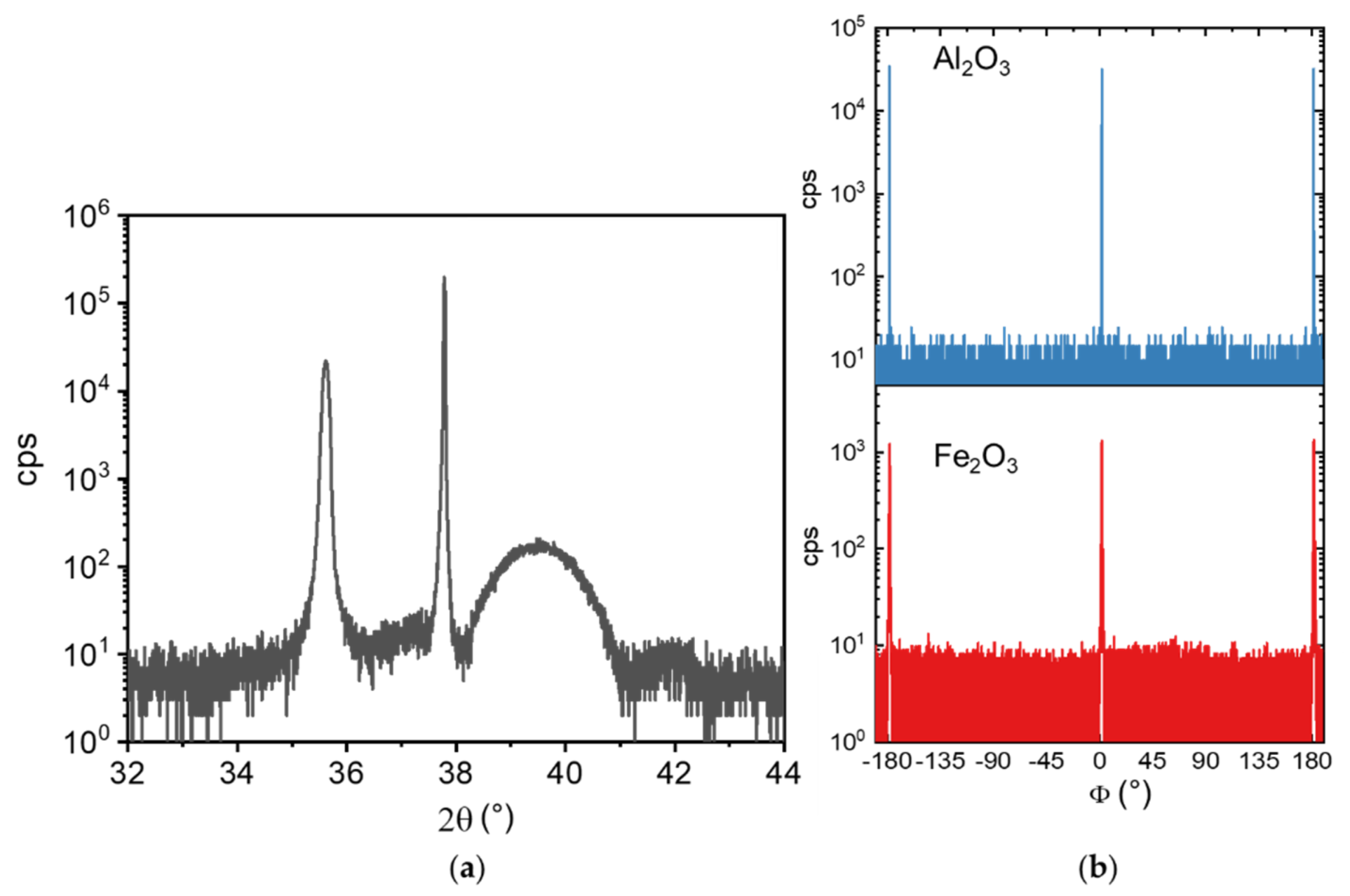
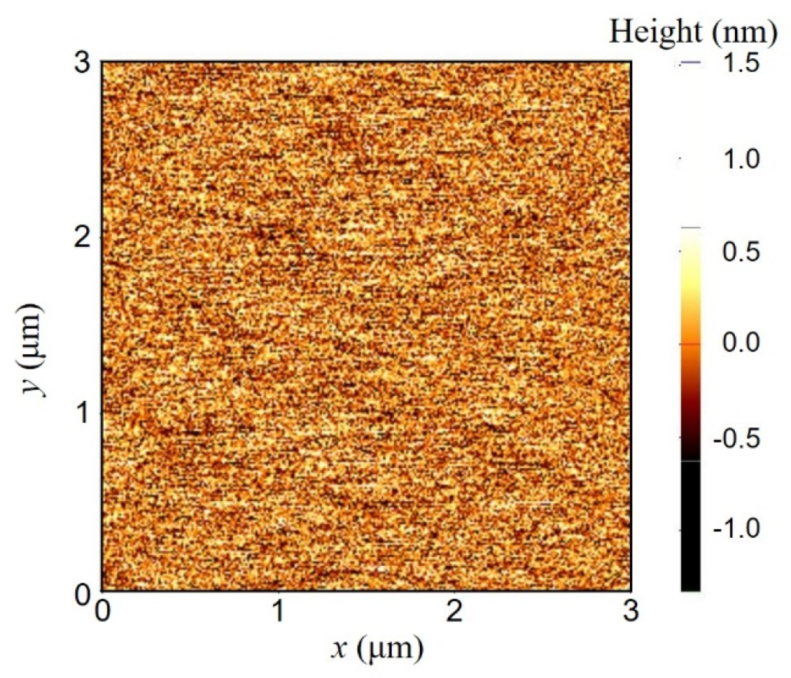
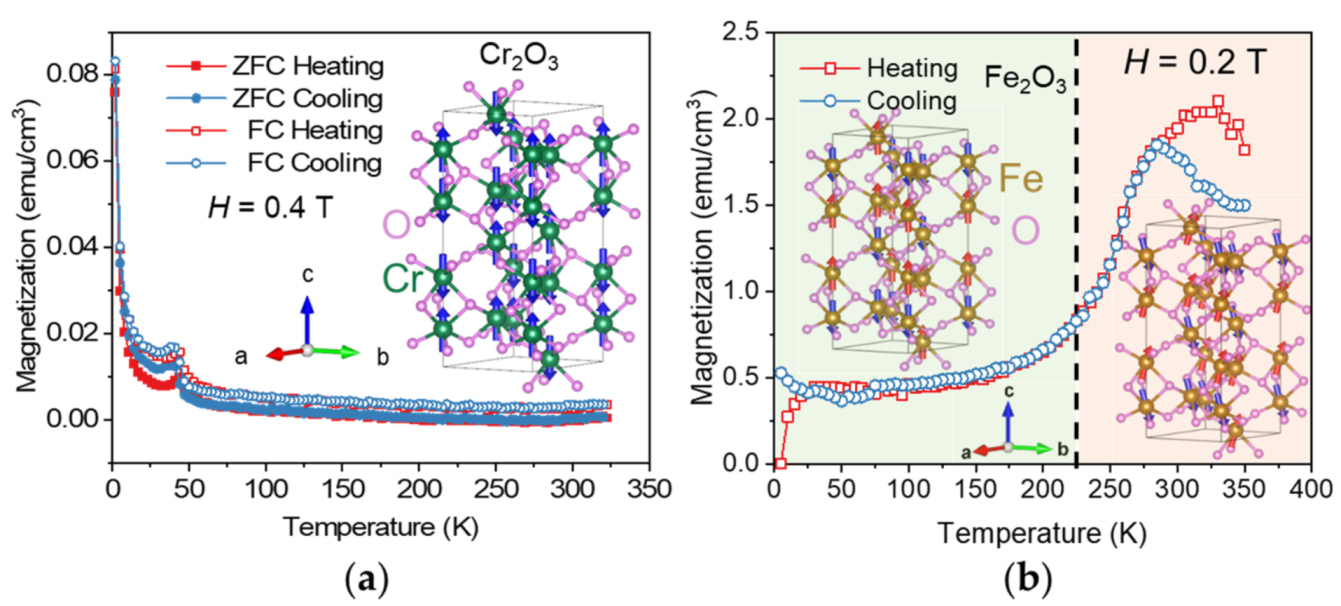
Publisher’s Note: MDPI stays neutral with regard to jurisdictional claims in published maps and institutional affiliations. |
© 2021 by the authors. Licensee MDPI, Basel, Switzerland. This article is an open access article distributed under the terms and conditions of the Creative Commons Attribution (CC BY) license (https://creativecommons.org/licenses/by/4.0/).
Share and Cite
Siddiqui, S.A.; Hong, D.; Pearson, J.E.; Hoffmann, A. Antiferromagnetic Oxide Thin Films for Spintronic Applications. Coatings 2021, 11, 786. https://doi.org/10.3390/coatings11070786
Siddiqui SA, Hong D, Pearson JE, Hoffmann A. Antiferromagnetic Oxide Thin Films for Spintronic Applications. Coatings. 2021; 11(7):786. https://doi.org/10.3390/coatings11070786
Chicago/Turabian StyleSiddiqui, Saima Afroz, Deshun Hong, John E. Pearson, and Axel Hoffmann. 2021. "Antiferromagnetic Oxide Thin Films for Spintronic Applications" Coatings 11, no. 7: 786. https://doi.org/10.3390/coatings11070786
APA StyleSiddiqui, S. A., Hong, D., Pearson, J. E., & Hoffmann, A. (2021). Antiferromagnetic Oxide Thin Films for Spintronic Applications. Coatings, 11(7), 786. https://doi.org/10.3390/coatings11070786





